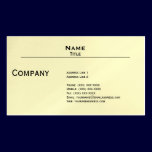Suggestions
- Check to ensure that you have an approved financial hardship. You will not be allowed to cash out your 401k if your financial situation does not qualify for a hardship withdrawal. Qualifying situations can include: medical expenses, funeral expenses, college expenses for you or your immediate family, funds to purchase a first home or funds to prevent foreclosure.
- Verify whether your employer requires you to provide a Proof of Need document to prove your financial hardship in order to be eligible for a hardship withdrawal. If a Proof of Need document is required, ask your employer which documents you will need to provide to prove a legitimate financial hardship. Some plans do not require those who wish to cash out a 401k to provide a Proof of Need. These plans are known as "Self-certification" plans.
- Check that the funds contained in your 401k retirement plan are enough to meet your financial need. Cashing out a 401k to meet a financial hardship has strict rules that must be followed. Your withdrawal from your retirement plan can amount to no more than you need to meet your financial obligations. In addition, you must be unable to meet your hardship obligation through any other methods before you consider cashing out your 401k investment.
- Compare the amount of your 401k to your current tax bracket and calculate the taxes you will be forced to pay on the investment once it is cashed out. In some cases you can expect to lose up to 45 percent of the total funds contained in the 401k plan when you cash it out.
- Cash out your 401k using a hardship withdrawal and put the funds toward paying off the hardship.
- Report the amount you withdrew from your 401k retirement plan on your following year's tax return as gross income.
______________________
Custom Business Cards
$78.90 - Iridescent Pearl Finish






No comments:
Post a Comment